When you hear the word carnivore what do you think of? Tigers and polar bears? Well, not all carnivorous beings are quite so large, or so mammalian. There also lots of plants that feed on animals!
Whereas animal carnivores generally hunt or scavenge for their meat requirements, carnivorous plants are somewhat limited in movement abilities so must employ other strategies.
Instead of having to search for their food, they wait for it to come to them, perhaps luring it in with sweet smells or nectar, and then… there is a deadly trap waiting.
These traps come in a few different types, from the snapping “toothed” leaves of the Venus flytrap to the syrupy glue of the sundews. Read on to find out about these and more.
10 carnivorous plants
Venus flytrap (Dionaea muscipula)
Undoubtedly the best-known example of a carnivorous plant, the Venus flytrap can be found growing wild in the wetlands of the eastern United States (or not-wild in any plant nursery).
Among carnivorous plants, there are five different ways in which they capture their prey. These trapping mechanisms are pitfall traps, flypaper traps, snap traps, bladder traps, and lobster pot traps.
Venus flytraps are examples of snap traps. A bit like a mousetrap, the hinged leaves will snap shut when a prey animal touches one of the sensitive hair-like projections on the inner surface of the leaf. The prey is then trapped behind the flytrap’s spiny ‘teeth’ and is subsequently digested by a red sap. This digestion takes about 10 days after which the leaves will open up again, ready for more unsuspecting flies.
Common bladderwort (Utricularia vulgaris)
Bladderworts on the other hand, as the name might suggest, are examples of bladder traps. These traps work by creating an internal vacuum in their ‘bladders’ by pumping out water and then literally sucking in prey through hinged trapdoors. In the aquatic species, the doors have long trigger hairs which work to release the vacuum mechanism when triggered by small invertebrates. There are approximately 233 species in this widespread genus and they can be found in freshwater or wet soil on every continent bar Antarctica. This particular species, the common bladderwort is a free-floating aquatic species found in Europe and Asia.
Sundews (Drosera genus)
Sundews are flypaper traps, using sweet and sticky secretions to attract and ensnare their invertebrate prey. The sticky substance is produced by glands on their tentacle-like leaves which move in response to contact with prey, coiling inwards to further trap and smother it.
This large genera of plants can be found in much of the world but with 50% of the species in Australia. The name ‘sundew’ comes from the droplets of mucilage which glisten in the sun, looking like dew, but much more deadly…
Read about efforts to save one of England’s native sundew species.
California pitcher plant (Darlingtonia californica)
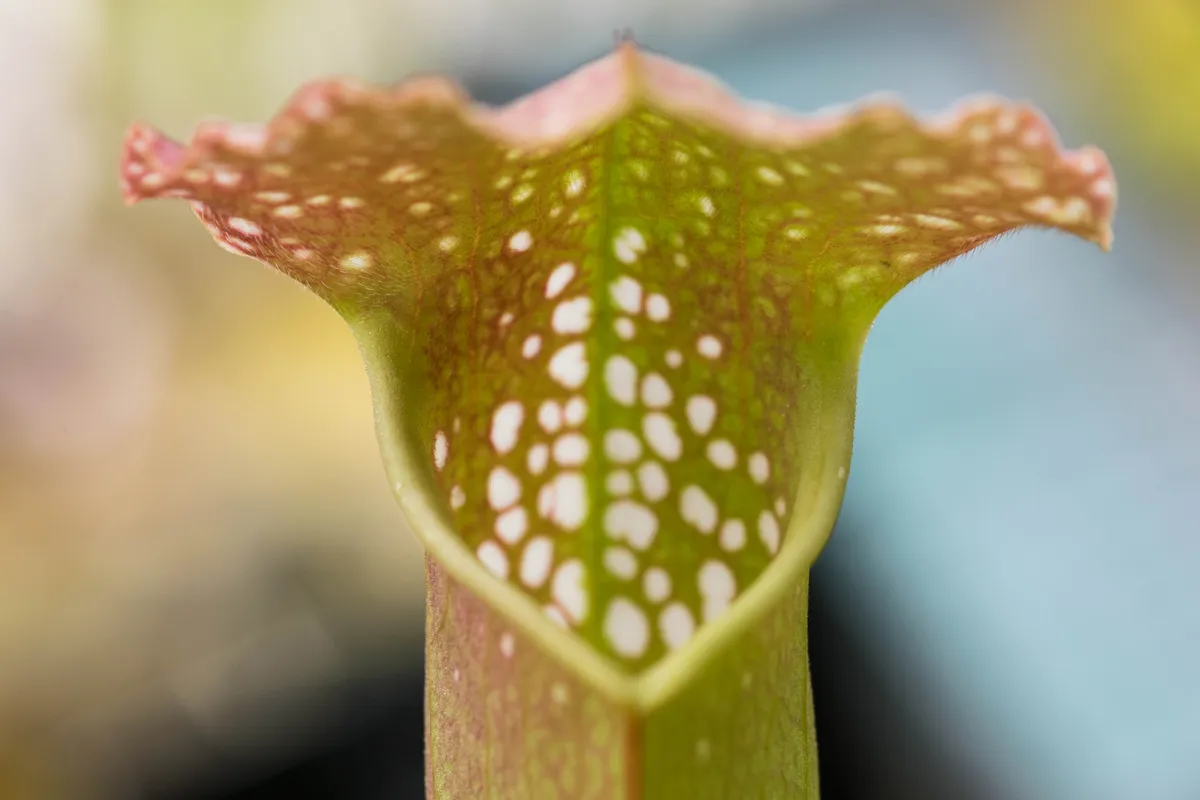
Like all pitcher plants, this species, also known as the cobra lily due to its serpentine shape and fang-like leaves, is a pitfall trap. A passive type of trap (rather than active Venus flytrap), pitcher plants lure insects into their slippery walled pitchers with smells and nectar bribes where they quickly get disorientated and tired and eventually fall down into the digestive fluid waiting at the bottom of the plant.
This plant is particularly insidious, providing its prey with many false exits which give them the hope of escape but only succeed in making them more exhausted. As the name suggests this plant is native to the USA, found only in Northern California and Oregon.
Corkscrew plants (Genlisea genus)
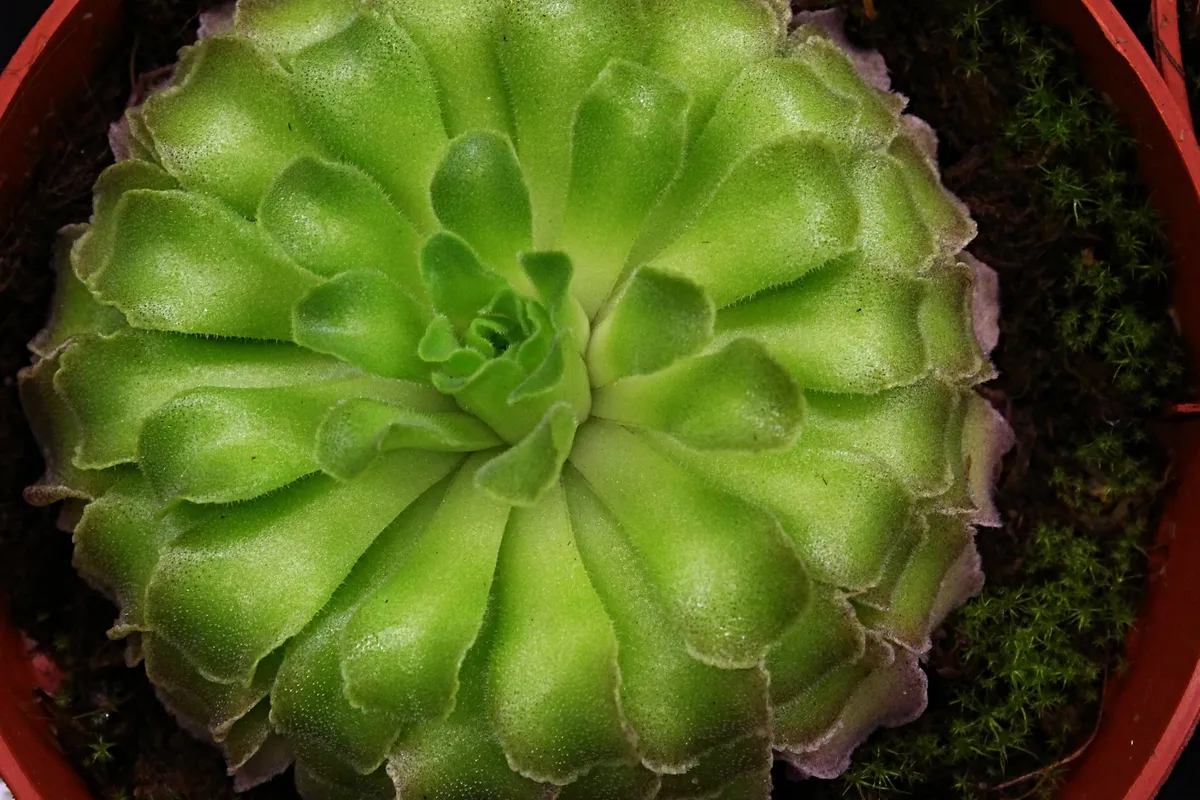
The final type of carnivorous trapping mechanism is the lobster pot trap. These types of traps are ones that are easy to enter, but hard to leave, due to spikey inward-pointing bristles.
Genlisea, a genus of around 30 species, all use this mechanism to capture their minute prey. These plants are very small, less than an inch in length, and their prey are correspondingly minuscule. Unlike the other species on the list so far, who prey on invertebrates, these plants specialise in eating protozoa, tiny single-celled organisms. Fairly uncommon, these plants are only found in tropical regions of Africa, Madagascar, and Central and South America.
Rainbow plants (Byblis genus)
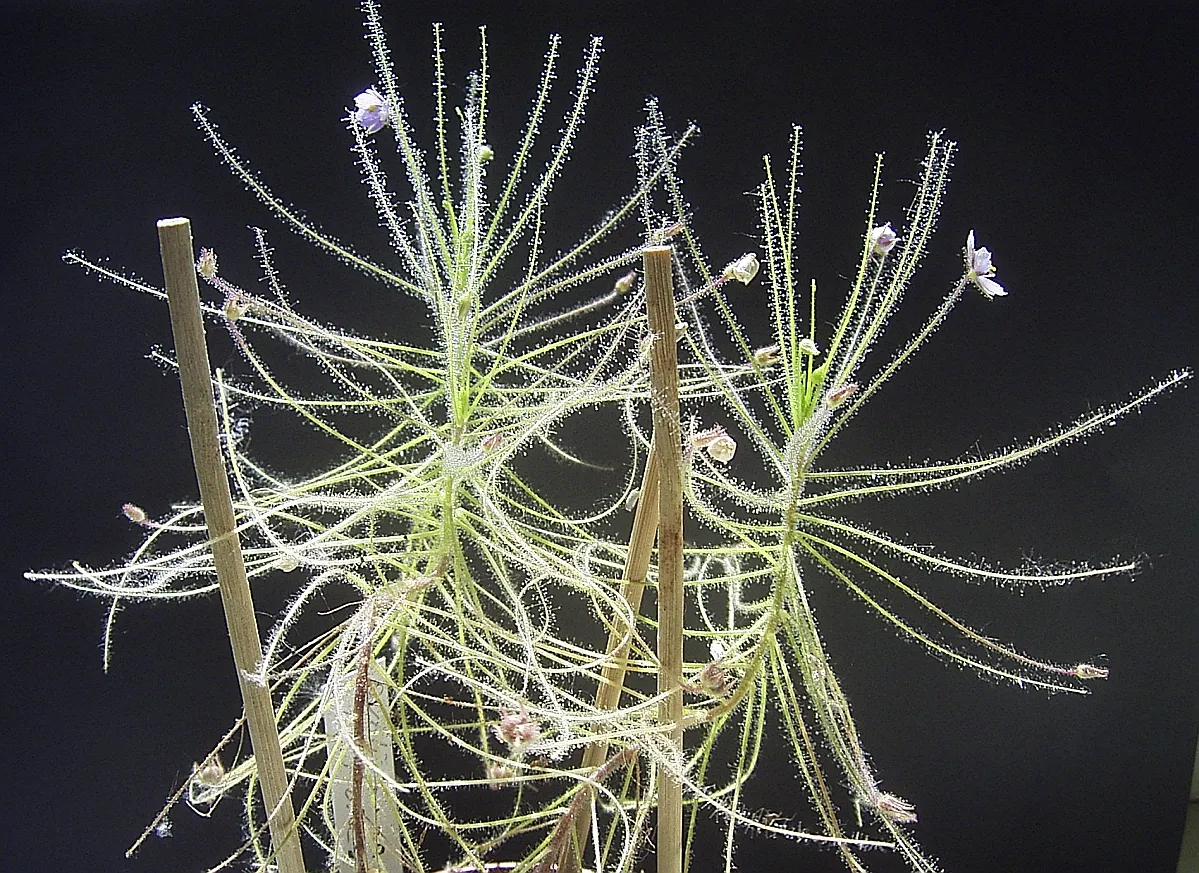
Particularly beautiful killers, the plants in this genus are sometimes called rainbow plants for the way their leaves glisten and look multicoloured in bright sunlight. This sparkling appearance comes from their sticky mucilage, as, like sundews, they are flypaper traps.
These species have tapered leaves covered in a dense layer of glandular hairs that secrete this glue-like substance, attracting and ensnaring small insects. Unlike sundews, however, they cannot move their leaves to aid trapping and must rely on the adhesive properties of the mucilage alone. They can be found in north and southwestern Australia.
Nepenthes rajah
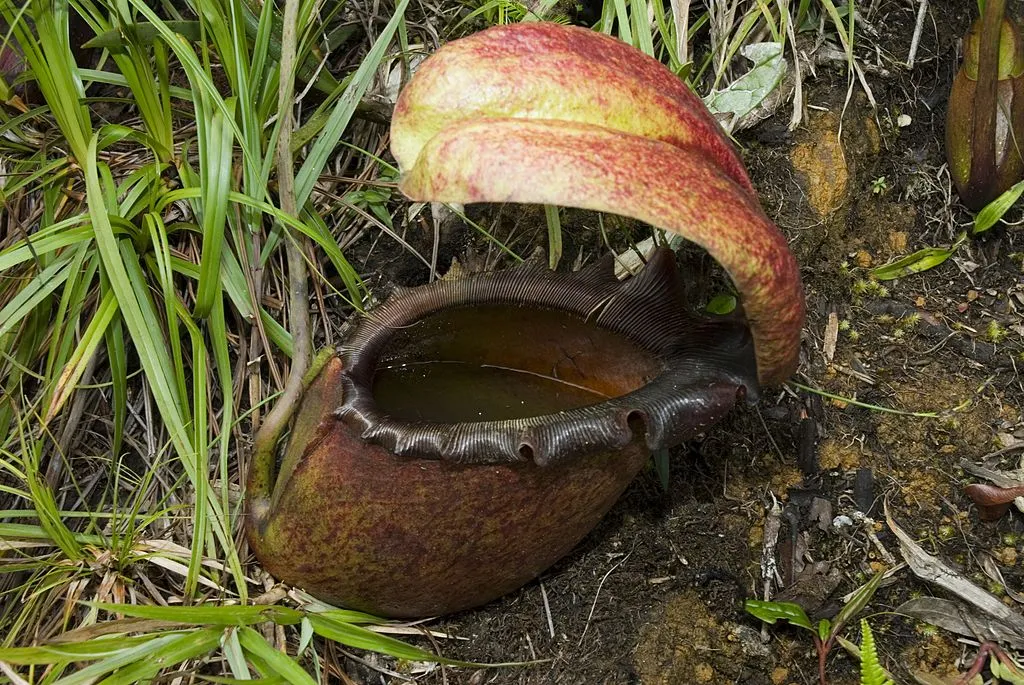
The next on our list devours much larger prey than the others. This Malaysian pitcher plant species has been known to trap animals as big as shrews, frogs, lizards, and even birds in its pitfall.
It can do this due to its particularly large pitchers which are capable of holding around 3.5 litres of water! Vertebrates can fall into these urn-shaped death traps and drown. They are then digested by the copious amounts of digestive fluids.
This species also consumes an even less savoury food source than drowned shrews - shrew droppings! The plant has a mutualistic relationship with shrews such that in return for nectar, which they lick off whilst hovering their bottoms over the lavatory-like pitcher, it gets their nutritious poops. The nectar even acts as a laxative, making sure they go there and not elsewhere.
Read here about another related poo-eating pitcher plant species.
Aldrovanda vesiculosa
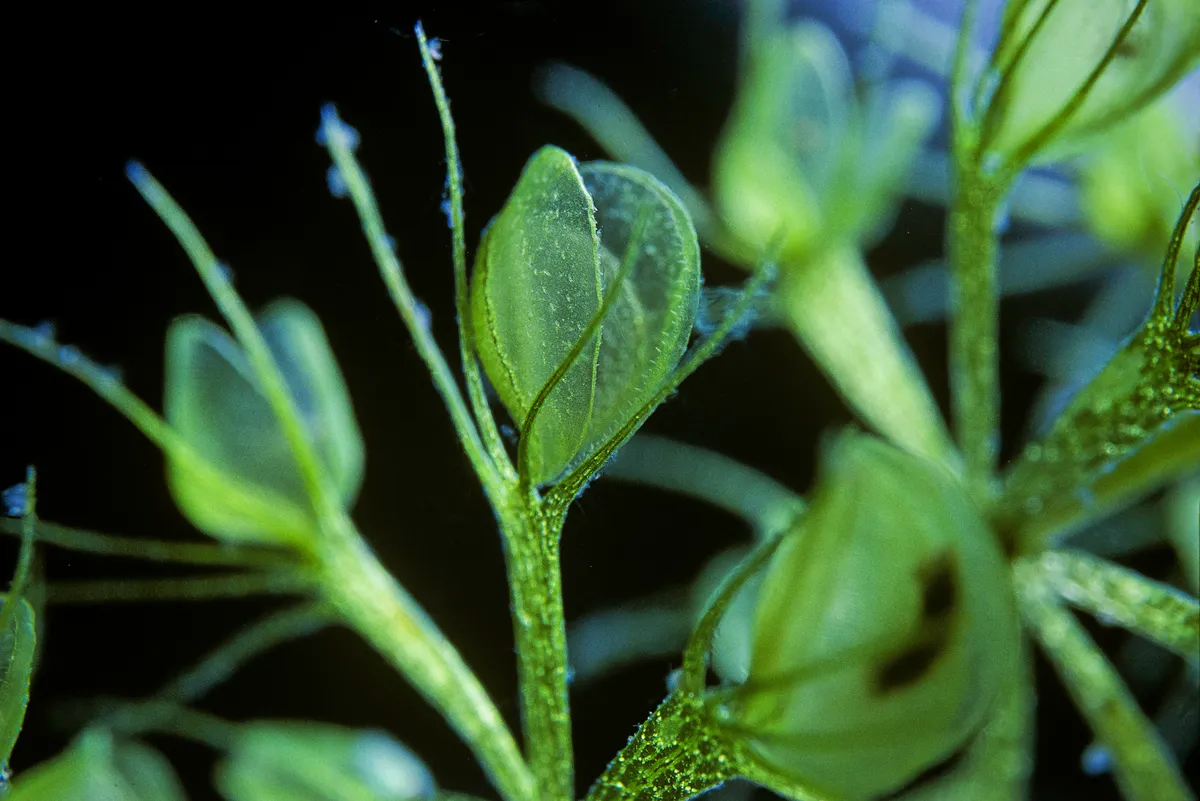
This next plant holds the distinction of being the sole living member of its species. Also known as the waterwheel plant, it is the only example of the aquatic Aldrovanda genus.
Their common name stems from the fact that their snap traps are arranged in circles around a central free-floating stem. Like the Venus flytrap, it ensnares small prey within hinged lobe-leaves that are triggered to close when sensitive trigger hairs are touched. Although very widespread, being found in Europe, Asia, Africa, and Australia, these plants are nonetheless very rare, existing in only 50 confirmed populations worldwide and listed as an endangered species on the IUCN Red List of Threatened Species.
Utricularia gibba
Also known as the humped bladderwort, this pretty yellow-flowered species can be found growing floating on boggy, or slow-flowing waters like lakes, ponds, swamps, and ditches. It doesn't put out any roots, but floats on the water's surface soaking in the sun and forming large, dense mats of interwoven branches. It is famed for being very genetically efficient.
What this means is that when its genome was sequenced it was found to be very small compared to other plants. However, it has just as many useful coding genes in its DNA, it just lacks a lot of the non-coding “junk” DNA that other organisms are saddled with. For example, the human genome is made up of only about 1-2% coding DNA, meaning that up to 99% of it is not useful genetic code. In these bladderworts, however, coding DNA makes up a whopping 59% of their genome.
Brocchinia reducta
This species is a rare carnivorous bromeliad, only one of a few in the family. Like many other bromeliads, its tightly overlapping leaves form a central cup into which water can be stored. In most species, this acts to make up for the lack of a well-developed root system and allows them to keep hydrated as well as extract nutrients from the standing water. In Brocchinia reducta it has another function - luring in unwary insects with its sweet smell and drowning them in the pool where they are then digested. The leaves that form the side of the trap are covered in loose waxy scales, meaning that any insects that land on them will likely slip down to their watery demise.
